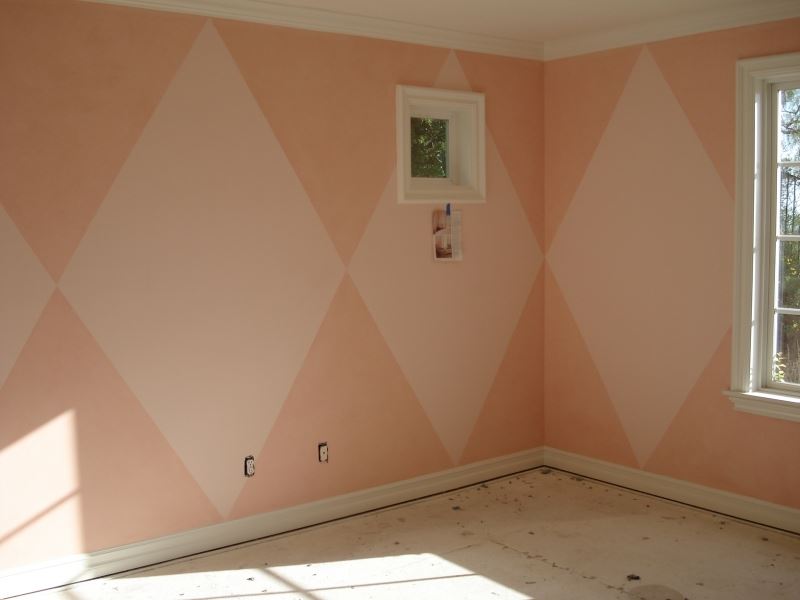 Faux finishing with interesting colors is not a new trend. Homeowners are constantly looking for novel ideas when considering a room makeover. Diagonal painting is one of those interesting finishes that can be done with a little color coordination and time.
Faux finishing with interesting colors is not a new trend. Homeowners are constantly looking for novel ideas when considering a room makeover. Diagonal painting is one of those interesting finishes that can be done with a little color coordination and time.
Choose a base color in eggshell, satin or semi-gloss enamel. Repair and prime the walls and apply the base coat. Allow to dry sufficiently. To prepare the topcoat glaze color, pour one part of a premium interior paint (same as base or a lighter or darker shade) into a bucket with four parts of the faux glaze and mix thoroughly. To create a “see-through” look, you will need to mix extra faux glaze into the mixture. For a dense look, add more paint. One thing to remember is to mix the entire amount of glaze color into the faux glaze to create a uniform color mixture for the entire project.
To begin, you will cut in the mixture around the ceiling and baseboards. Next, use a medium or mini roller and begin to roll the walls with this mixture in two to three feet sections. While the mixture is still wet, drag a small, whisk broom over the entire section and work diagonally beginning in a corner, overlapping when necessary to create uniformity. As you work, wipe off the whisk broom after each section to remove drying paint and create a fresh work instrument for each use. Continue in these small sections and step back from time to time to guarantee that the project is uniform.
Good colors to use with this technique include golds, salmon, beige, rustic and nature colors, and the diagonal lines create a nice effect.
